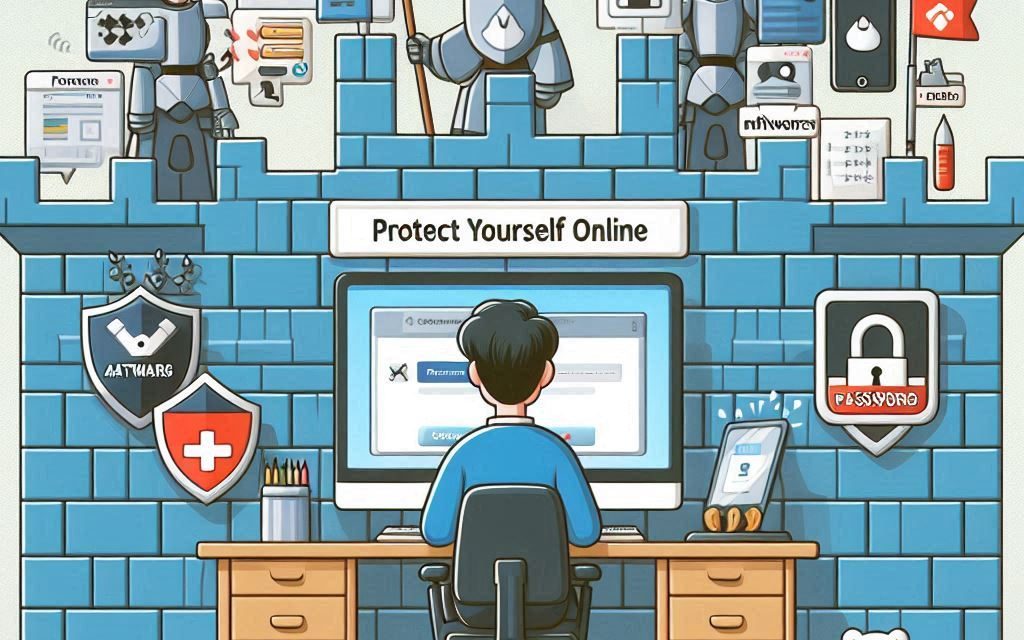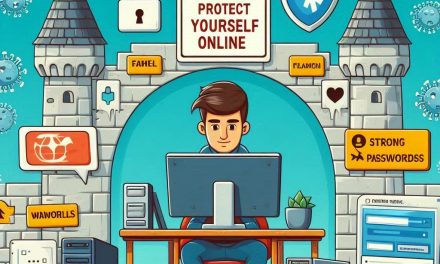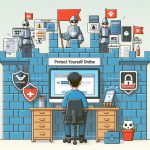In today’s interconnected world, protecting your identity online has become a paramount concern. With the increasing prevalence of cyber threats, data breaches, and identity theft, it’s essential to take proactive measures to safeguard your personal information. This article outlines effective strategies to help you protect your identity and maintain your privacy in the digital landscape.
Understanding the Risks
Before diving into protective measures, it’s crucial to understand the risks involved. Cybercriminals use various tactics to steal personal information, including phishing scams, malware, and social engineering. They can exploit weaknesses in your online habits or target specific vulnerabilities in websites and applications. Awareness of these threats is the first step toward safeguarding your identity.
- Use Strong, Unique Passwords: One of the simplest yet most effective ways to protect your identity is to use strong, unique passwords for each of your accounts. Avoid common words, phrases, or easily guessable information like birthdays. Instead, opt for a mix of uppercase and lowercase letters, numbers, and special characters.
- Password Management Tools: Consider using a password manager to generate and store complex passwords securely. These tools not only help you create strong passwords but also fill them in automatically, reducing the likelihood of password reuse across different sites.
- Enable Two-Factor Authentication (2FA): Two-factor authentication adds an additional layer of security beyond just a password. It requires a second form of verification, such as a text message code or authentication app, to access your accounts. Enabling 2FA significantly reduces the risk of unauthorized access, even if your password is compromised.
- Be Cautious with Personal Information: Be mindful of the personal information you share online. Many social media platforms encourage sharing, but oversharing can make you a target for identity theft. Review your privacy settings and limit the information available to the public. Only share what is necessary, and be cautious about accepting friend requests or connecting with unknown individuals.:
- Regularly Update Software
Keeping your software, operating systems, and applications updated is critical in protecting your identity. Updates often include security patches that address vulnerabilities that cybercriminals may exploit. Enable automatic updates whenever possible, and regularly check for updates on your devices. - Use Secure Connections
When accessing sensitive information, always use a secure connection. Avoid public Wi-Fi for financial transactions or accessing sensitive accounts, as these networks can be easily compromised. If you must use public Wi-Fi, employ a Virtual Private Network (VPN) to encrypt your connection and protect your data. - Be Wary of Phishing Scams
Phishing scams are one of the most common tactics used by cybercriminals to steal personal information. These scams typically involve deceptive emails or messages that appear to be from legitimate sources, urging you to click on a link or provide sensitive information. - How to Spot Phishing Attempts
To protect yourself, be skeptical of unsolicited emails, especially those that create a sense of urgency. Always check the sender’s email address, hover over links to see their actual URLs, and look for grammatical errors or suspicious language. When in doubt, contact the organization directly using official contact information rather than responding to the email. - Monitor Your Accounts
Regularly monitoring your financial and online accounts can help you detect any unauthorized activity early. Set up alerts for transactions or changes to your accounts, and review your statements regularly for any discrepancies. If you notice anything unusual, report it immediately. - Limit App Permissions
Many apps request access to your personal information, such as location, contacts, and photos. Before granting permissions, consider whether the app truly needs that information to function. Review app permissions regularly and revoke access for apps that no longer require it. - Use Antivirus and Anti-Malware Software
Installing reputable antivirus and anti-malware software can provide an additional layer of protection against cyber threats. These tools can help detect and remove malicious software before it compromises your identity. Ensure your antivirus software is always updated to protect against the latest threats. - Educate Yourself
Staying informed about online security threats and best practices is vital for protecting your identity. Follow reputable sources of information on cybersecurity, and consider participating in online safety courses. The more you know, the better equipped you’ll be to navigate the digital landscape safely. - Secure Your Social Media Accounts
Social media platforms can be gold mines for identity thieves. Review your privacy settings to control who can see your posts and personal information. Consider using a pseudonym instead of your full name, and limit friend requests to people you know personally. - Be Mindful of Friend Lists
Be aware of who is in your friend list and remove individuals who you no longer interact with or trust. Cybercriminals often use social engineering to gain access to your accounts, so the fewer people who have access to your personal information, the better. - Consider Identity Theft Protection Services:
If you’re particularly concerned about identity theft, you might consider enrolling in an identity theft protection service. These services monitor your personal information across various platforms and can alert you to suspicious activity. Some services also offer recovery assistance if your identity is stolen.
Conclusion: Protecting your identity online is an ongoing effort that requires vigilance and proactive measures. By implementing these strategies—using strong passwords, enabling two-factor authentication, being cautious about the information you share, and staying informed—you can significantly reduce your risk of identity theft. In a digital world filled with potential threats, taking control of your online security is essential for safeguarding your personal information and maintaining your peace of mind. Stay informed, stay secure, and enjoy the benefits of a safer online experience









